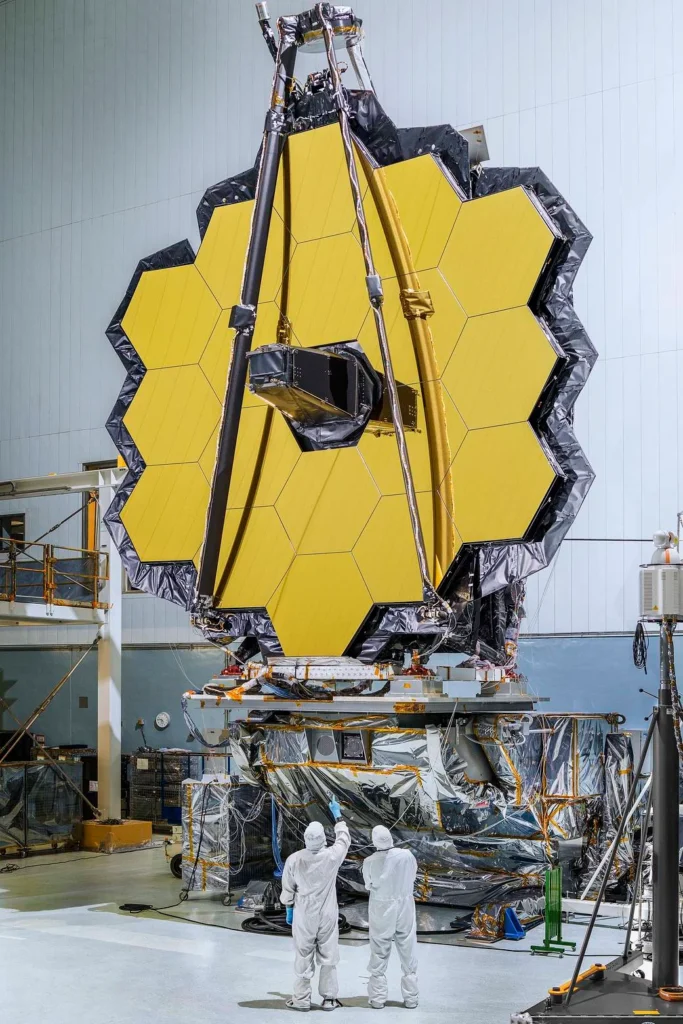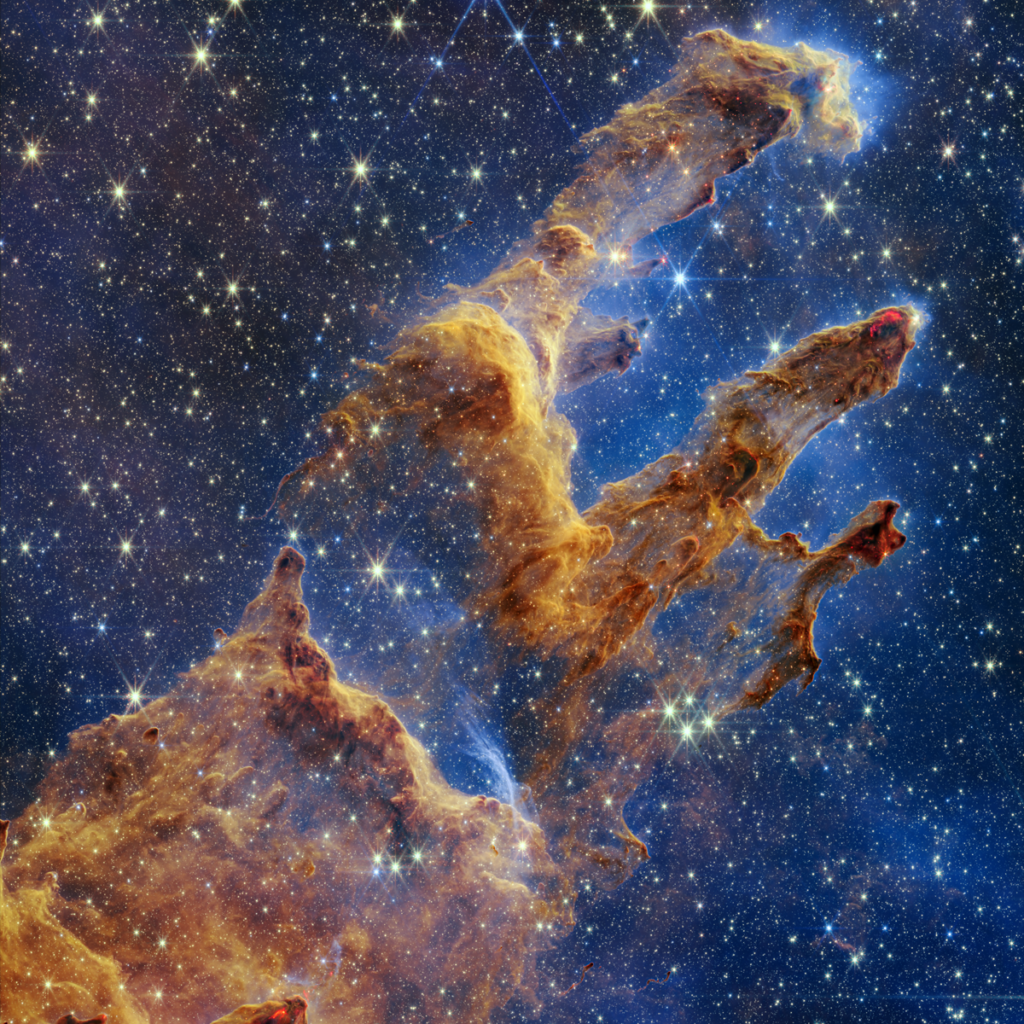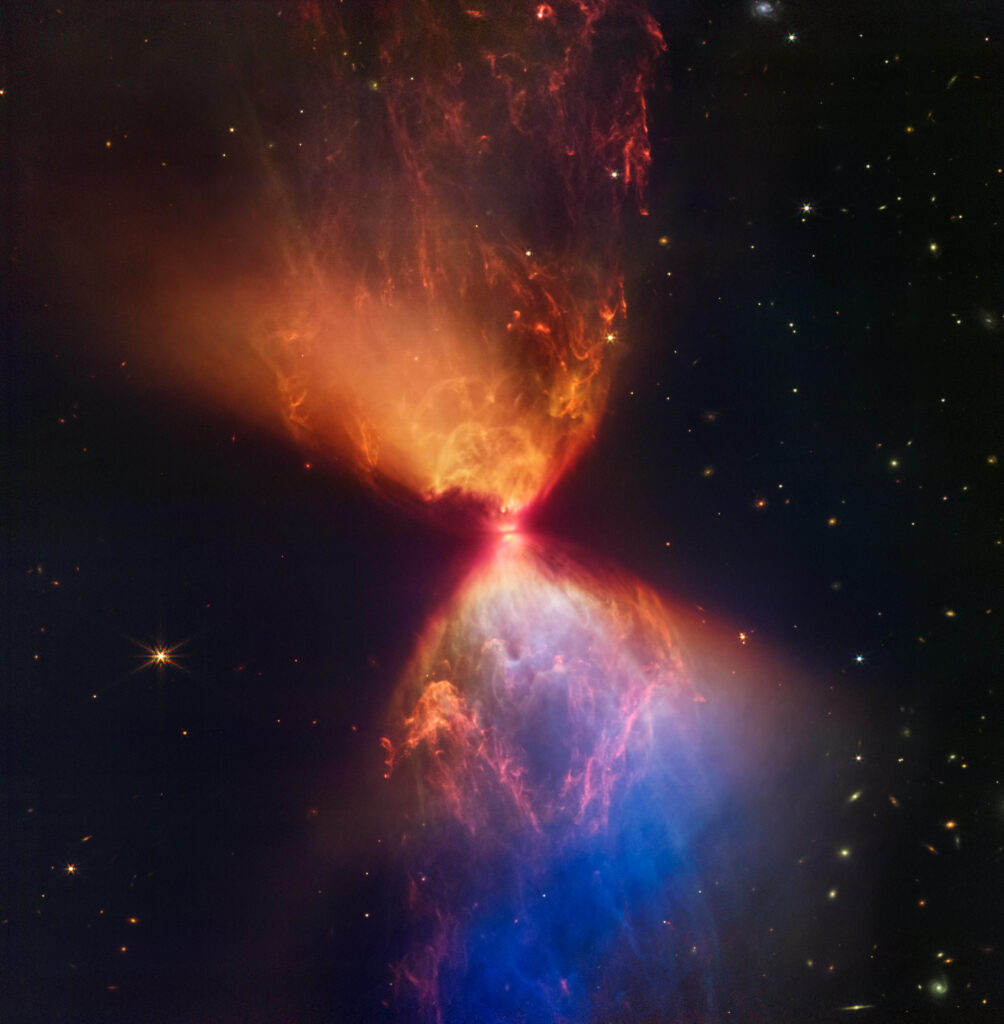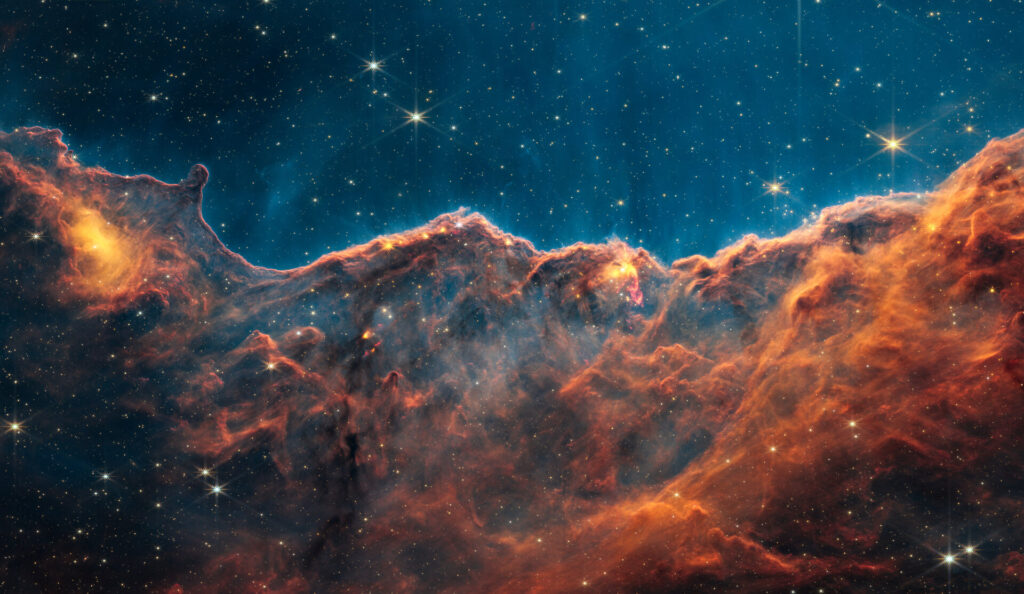TECHNOLOGY
By Hamza Majid
September 30th, 2023
Unveiling Universe's Secrets:
JWST Is Revolutionizing Science
The universe has always captivated humanity, from ancient civilizations gazing at the night sky to modern astronomers utilizing cutting-edge tools in the relentless pursuit of discovery. Scientists across ages have contributed to this fascination, whether by unraveling mysteries within our solar system or by posing thought-provoking questions for future generations. In this fashion, a transformative innovation is now emerging: the James Webb Space Telescope (JWST).
Launched on a remarkable voyage on Christmas Day in 2021, the JWST carries the aspirations of astronomers eager to peer deeper into the cosmos. Their dreams encompass witnessing the formation of the first galaxies, observing the birth of stars concealed within dust clouds, and exploring the atmospheres of distant exoplanets for signs of habitability. After over a year in space, the JWST is starting to breathe life into these dreams.
The James Webb Space Telescope represents a collaborative triumph of international scientific exploration. NASA, the European Space Agency (ESA), and the Canadian Space Agency (CSA) pooled their collective expertise to usher this space observatory into existence. This endeavor, initiated in the mid-1990s, extended the boundaries of technology and engineering to create a telescope with unprecedented capabilities. Despite its launch in late 2021, the JWST journeyed for 29 days to reach its orbital home, the L2 Lagrange point, and still required an additional five months for scientists and engineers to prepare the telescope for its scientific mission. Thus far, the JWST has provided initial findings primarily from early-release science programs and proposals from the first cycle of science operations.

Testing the James Webb Space Telescope at a Northrop Grumman facility in Redondo Beach, California (Image Credit: Chris Gunn, NASA)
At the core of the JWST's significance lies its colossal size. It boasts a 6.5-meter mirror composed of 18 gold-plated hexagonal segments, capturing over six times the amount of light compared to the Hubble Space Telescope. This substantial increase in light-gathering ability enables the JWST to record the radiance of celestial objects six times faster than its renowned predecessor. Yet, the JWST's true superpower is its sensitivity to infrared light. This space telescope can perceive a vast range of wavelengths, underscoring its excellence in observing the cosmos beyond the range of human vision and providing an exclusive view into otherwise hidden cosmic phenomena.
Infrared observations enable astronomers to witness galaxies that existed less than a billion years after the Big Bang. By peering into the infrared, the JWST offers the only means to explore these ancient galaxies from Earth's vantage point. Furthermore, the telescope excels at studying newly forming stars concealed within dust clouds, as dust scatters visible light but permits the passage of infrared radiation. The JWST's realm of exploration extends beyond distant galaxies and star formation; its versatile infrared capabilities enable it to uncover hidden details within our solar system, such as the pillars of creation.

JWST unveils awe-inspiring 'Pillars of Creation,' celestial structures where stars are born and clusters thrive, spanning up to 5 light-years in width and 4 light-years in length (Photo Credit: JWST,NASA)
The JWST is akin to a planetary weather satellite for our solar system, offering detailed observations that augment our understanding of celestial neighbors. The JWST can scrutinize storm systems on gas giants like Saturn and Neptune with unprecedented detail. Although not initially designed for exoplanet discovery, the JWST is rewriting the playbook on exoplanetary exploration. Within our galaxy, more than 5,000 exoplanets remain shrouded in mystery, with limited available information. Its most impressive feature is its ability to analyze exoplanet atmospheres. This task requires observing the transits of exoplanets across their host stars using the telescope's powerful spectrographs. During these transits, the exoplanets' atmospheres filter certain wavelengths of their host star's light. Each atom and molecule has a unique spectral signature, enabling astronomers to deduce the chemical composition of these distant worlds.
Star formation is a universal phenomenon that transcends the boundaries of our galaxy, leading JWST scientists to investigate its various manifestations. Two significant celestial sites of interest lie within our Local Group: the Large and Small Magellanic Clouds. Among the Milky Way's most massive, these satellite galaxies offer essential insights into the universe. What sets these galaxies apart is their relatively low metal content, which is approximately half that of the Milky Way. This characteristic mirrors the conditions prevalent in the universe when it was merely 2 to 3 billion years old.

A protostar (L-1527) , only 100,000 years old, already contains 20% to 40% of our Sun's mass. As it forms, the surrounding clouds show blue and orange hues based on dust density, with blue for thinner areas and orange for denser ones (Photo Credit: NASA)
NASA's James Webb Space Telescope, an instrument of extraordinary capabilities, has delved into one of the cosmos's most iconic landscapes: the Pillars of Creation. This captivating region showcases elephant trunk-like formations of interstellar gas and dust within the Eagle Nebula, situated some 6,500–7,000 light-years from Earth in the Serpens constellation. These pillars are named for their role in nurturing the birth of new stars while also enduring the erosive forces of nearby, recently formed stars. Webb's Near-Infrared Camera (NIRCam) provides a lush, detailed portrait of these three-dimensional pillars, capturing the semi-transparent nature of the cool interstellar gas and dust. At the forefront of this cosmic display are newly formed stars, their bright red orbs punctuating the scene. The breathtaking wavy lines, resembling molten lava at the edges of some pillars, are a testament to the dynamic nature of this stellar nursery. These budding stars are estimated to be just a few hundred thousand years old, a mere blink of an eye in cosmic time. The power of near-infrared light showcased by Webb unveils the stunning details of the Pillars of Creation, where new stars emerge within this captivating interstellar landscape, contributing to our ever-expanding understanding of the cosmos.

One of JWST's standout images is "The Cosmic Cliffs of Carina" within the Carina Nebula. It showcases a star-forming region, with cliff-like features on the edge of a massive cavity, rising up to 7 light-years. The "steam" rising from these cliffs is hot gas and dust, expelled due to intense ultraviolet radiation from young stars
(Photo Credits: NASA)
In conclusion, the James Webb Space Telescope heralds a new era in cosmic exploration. Its conception and deployment signify the pinnacle of human achievement, illustrating our capacity to create a celestial sentinel of unprecedented capability. Equipped with advanced instruments and strategically positioned, the JWST promises to redefine our comprehension of cosmic evolution, exoplanetary landscapes, and the enigmatic universe enveloping us. The successful launch of this transformative telescope marks a new chapter in humanity's ongoing quest for knowledge beyond the confines of our home planet.
“Earth is a small town with many neighborhoods in a very big universe.”
― Ron Garan
Subscribe To Our Newsletter
Receive amazing space news and stories that are hot off the press and ready to be read by thousands of people all around the world.
